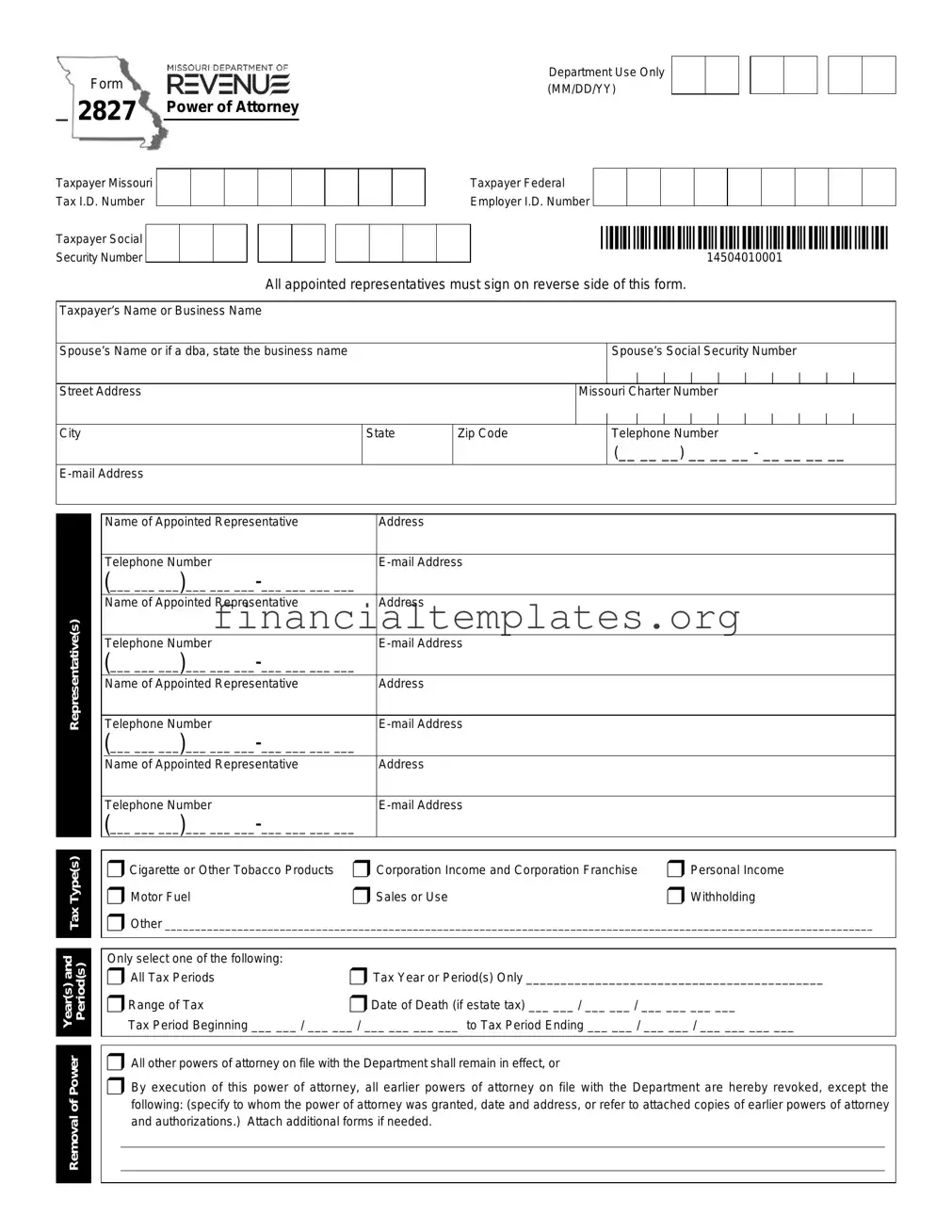The Tax Power of Attorney (POA) Form 2827 is a document that allows an individual to grant another person the authority to make tax-related decisions and handle tax matters on their behalf. A similar document is the General Power of Attorney. This document grants broad powers to an agent to act on an individual's behalf in various matters, not just tax issues. It can include the authority to manage financial, legal, and property matters, making it more comprehensive than the Tax POA.
Another document similar to the Tax POA Form 2827 is the Durable Power of Attorney. The key distinction between a Durable Power of Attorney and a Tax POA is that the former remains effective even if the principal becomes incapacitated. While the Tax POA is specifically for tax matters, a Durable Power of Attorney covers a wide range of decisions and can include tax matters among its provisions.
The Health Care Power of Attorney shares similarities with the Tax POA in that it designates someone else to make specific types of decisions on behalf of the individual. However, as the name suggests, it focuses on medical and health care decisions instead of tax or financial matters. It comes into effect under circumstances defined by the individual, such as incapacity to make health care decisions.
A Limited Power of Attorney is also akin to the Tax POA Form 2827 but with a more narrowly defined scope. This document allows an individual to grant another person the authority to act in specific situations or for specific tasks, such as selling a car or managing a single financial transaction, in contrast to the broader authority granted for handling all tax matters with a Tax POA.
The Financial Power of Attorney, much like the Tax POA, allows an individual to name someone else to handle their financial affairs. It can be more encompassing, including but not limited to tax matters, such as managing bank accounts, investments, and other financial decisions. The key similarity is the focus on financial decision-making, though the scope may be broader with a Financial Power of Attorney.
Last but not least, the IRS Form 2848, Power of Attorney and Declaration of Representative, is a document specifically designed by the Internal Revenue Service for tax purposes, akin to the Tax POA Form 2827. It allows taxpayers to appoint an individual, usually a tax professional, to represent them before the IRS. The form grants this individual the authority to obtain and disclose tax information, negotiate and agree to payment or settlement terms, and make other tax-related decisions. This form is very similar in purpose to the Tax POA but is specific to dealings with the IRS.


